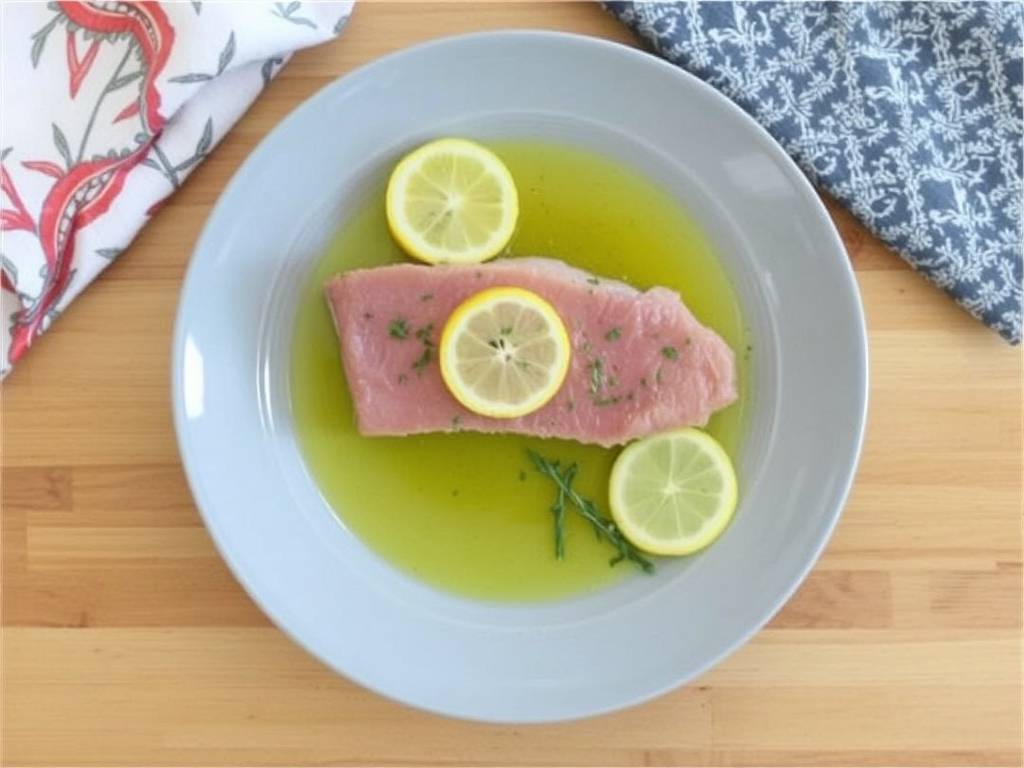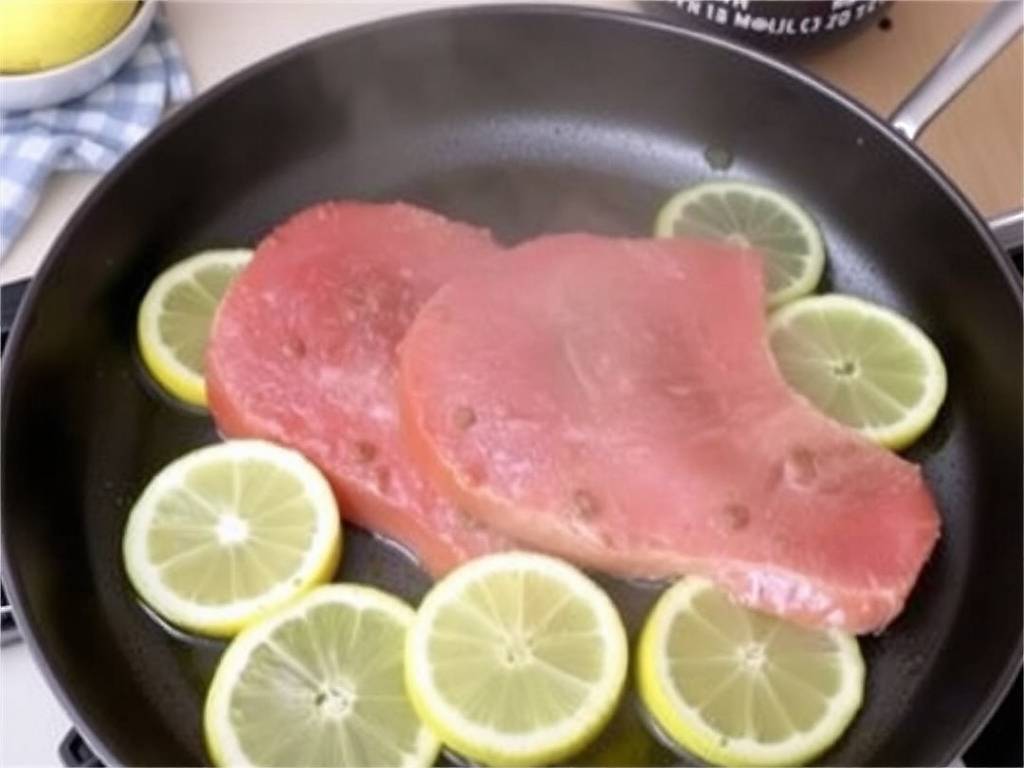The Ultimate Guide to Cooking Perfect Lemon-Infused Tuna Steak with Olive Oil
There's something truly special about a beautifully seared tuna steak. When cooked correctly, it's a dish that feels both gourmet and incredibly simple, a perfect centerpiece for a weeknight dinner or an impressive meal for guests. The classic combination of bright, zesty lemon and rich, fruity olive oil elevates the tuna's natural flavors, creating a healthy and delicious experience. If you've ever felt intimidated by cooking tuna, fearing a dry, overcooked result, or unsure about how to handle this prized fish, you've come to the right place. This comprehensive guide will walk you through every single step, from selecting the best tuna steak at the market to presenting a restaurant-quality dish on your plate.
Let's start at the very beginning: choosing your tuna. This is the most critical step in ensuring a fantastic outcome. For searing, you want a firm, steak-cut fish. The best choices are Ahi (Yellowfin) or Bigeye Tuna. These varieties have a robust texture that holds up beautifully to high heat. Look for steaks that are a deep, ruby red color, appear moist, and have a fresh, ocean-like smell. Avoid any steaks that look brownish, dry around the edges, or have a strong, "fishy" odor. When you're at the fish counter, don't hesitate to ask for "sushi-grade" or "sashimi-grade" tuna. This label indicates the fish has been handled to a higher standard and frozen to eliminate parasites, making it safer for cooking to rare or medium-rare, which is our goal.

Now, let's talk about the star ingredients that will make your tuna steak unforgettable: lemon and olive oil. Not all olive oils are created equal. For dressing and finishing the tuna, a high-quality extra virgin olive oil is non-negotiable. Its robust, peppery, and fruity notes will shine through and complement the tuna's flavor. For cooking, you can use a regular olive oil or even a high-smoke-point oil like avocado oil, but the extra virgin is for that final, flavor-packed drizzle. As for the lemon, both its juice and zest are culinary gold here. The zest, the yellow part of the peel, contains aromatic oils that provide an intense lemon flavor without the sharp acidity of the juice. We will use both to create a multi-layered citrus profile.
Preparation is Key: Bringing It All Together
Once you have your beautiful, one-inch-thick tuna steak, it's time to prepare it. Pat the steak thoroughly dry with paper towels. This is a secret step many home cooks skip, but it is essential for achieving a perfect, crispy sear instead of a steamy, gray exterior. Moisture is the enemy of browning!
Next, we create a simple yet powerful marinade or, more accurately, a coating. In a small bowl, combine two tablespoons of your best extra virgin olive oil, the zest of one whole lemon, a teaspoon of the lemon juice, and a generous seasoning of kosher salt and freshly cracked black pepper. You can also add other herbs like chopped fresh thyme or rosemary, but the lemon and olive oil base is so classic, it often needs nothing else. Brush this mixture evenly over all sides of the dried tuna steak. Let it sit at room temperature for about 15-20 minutes. This allows the fish to come to temperature for even cooking and lets the flavors penetrate the surface.
While the tuna is resting, get your cooking surface screaming hot. Whether you're using a cast-iron skillet, a stainless steel pan, or a grill, high heat is paramount. Place your pan over high heat and let it get very hot—you should see a slight wisp of smoke. This intense heat will sear the outside quickly, creating a delicious crust while leaving the inside gloriously rare and tender.

The Art of the Sear: Cooking Your Tuna Steak to Perfection
Add a thin layer of regular olive oil or avocado oil to the hot pan. Carefully place the tuna steak in the center. You should hear an immediate, assertive sizzle. Now, the most important rule: DO NOT move it! Let it cook undisturbed for about 60-90 seconds to form that beautiful crust. For a steak that is about one inch thick, here is your simple guide to doneness:
- For Rare (Highly Recommended): Sear for 60-90 seconds per side. The interior will be warm and red, similar to a rare beef steak. This showcases the tuna's texture and flavor at its best.
- For Medium-Rare: Sear for 90 seconds to 2 minutes per side. The interior will be pink.
- For Medium: Sear for about 2-2.5 minutes per side. The interior will be light pink and starting to become opaque.
I strongly encourage you to aim for rare or medium-rare. Tuna becomes dry and tough when cooked through. If you're using a grill, the process is identical—just ensure the grates are clean, well-oiled, and preheated.
Once seared on both sides, you can also sear the edges for about 15-20 seconds each for a uniform crust. Immediately remove the tuna from the heat and transfer it to a cutting board. Do not cut into it yet! Let it rest for a few minutes. This allows the juices to redistribute throughout the steak, ensuring every bite is moist and flavorful.
Serving and Presentation: The Final Touches
While the tuna is resting, this is the perfect time to whip up a quick pan sauce or dressing. If you used a skillet, you'll have some delicious browned bits left behind. Reduce the heat to low and add a couple more tablespoons of extra virgin olive oil and a tablespoon of fresh lemon juice. You can also add a tablespoon of capers or some chopped herbs. Swirl it around, scraping up the browned bits—this is pure flavor! This simple sauce will be incredible drizzled over the tuna.
To serve, slice the rested tuna steak against the grain into half-inch thick slices. This makes it easier to eat and presents beautifully. Arrange the slices on a plate, drizzle with the warm lemon and olive oil pan sauce (or simply with a fresh glug of extra virgin olive oil and a squeeze of lemon juice), and sprinkle with flaky sea salt. This is the perfect moment to use a high-quality finishing salt like Maldon.
What to Serve with Your Lemon Olive Oil Tuna Steak
Your masterpiece needs the right accompaniments. The bright, clean flavors of the tuna pair wonderfully with a variety of sides. Consider a simple arugula salad with a lemon vinaigrette, roasted asparagus, garlic sautéed spinach, or a quinoa pilaf with herbs. For a more substantial meal, creamy mashed potatoes or roasted baby potatoes provide a wonderful contrast in texture and temperature.
Addressing Common Questions and Troubleshooting
Let's tackle a few final points to make you a tuna-searing expert.
- Can I use frozen tuna? Yes, but thaw it slowly and completely in the refrigerator overnight. Pat it extremely dry before cooking.
- My tuna stuck to the pan! This usually means the pan wasn't hot enough, or you moved the steak too soon. Ensure a hot pan and a properly dried steak.
- I'm nervous about undercooking. Investing in a good instant-read thermometer can give you peace of mind. For rare, aim for an internal temperature of 125°F (52°C); for medium-rare, 135°F (57°C).
- Storing leftovers: Cooked tuna is best enjoyed immediately, but leftovers can be stored in an airtight container in the refrigerator for up to two days. They are fantastic flaked over a salad.
Cooking a perfect tuna steak with lemon and olive oil is a skill that will serve you for a lifetime. It's a demonstration of how a few high-quality ingredients, treated with respect and a bit of know-how, can create something truly extraordinary. So head to your fish market, grab a beautiful piece of tuna, and get ready to impress yourself. Happy cooking






发表评论